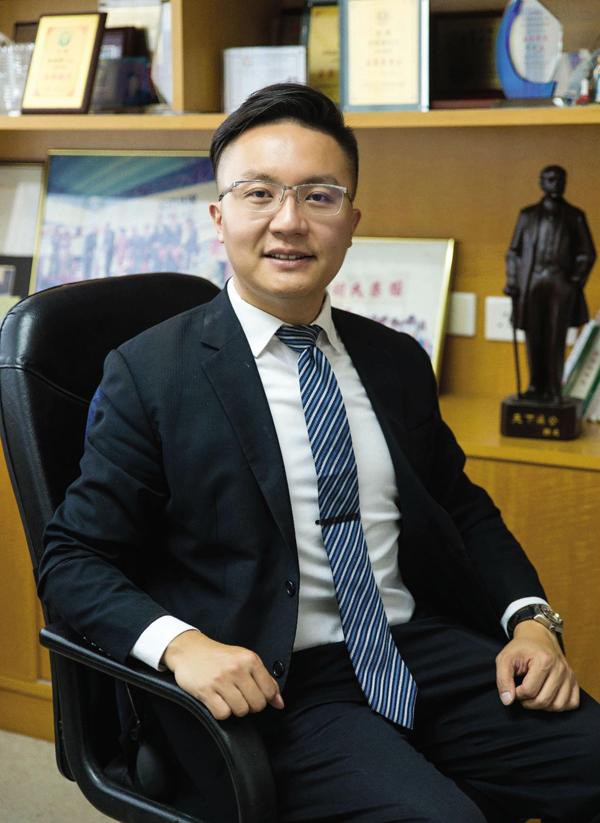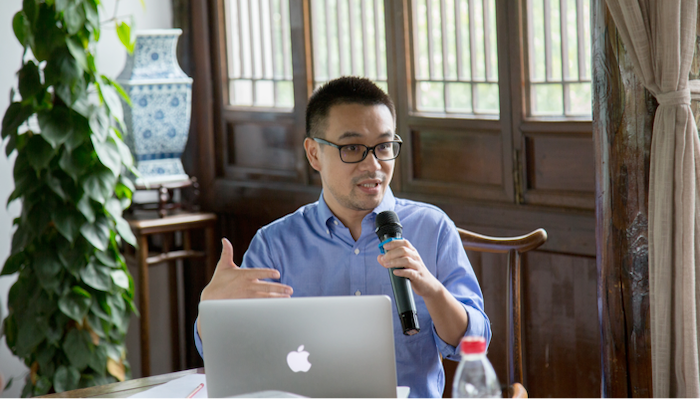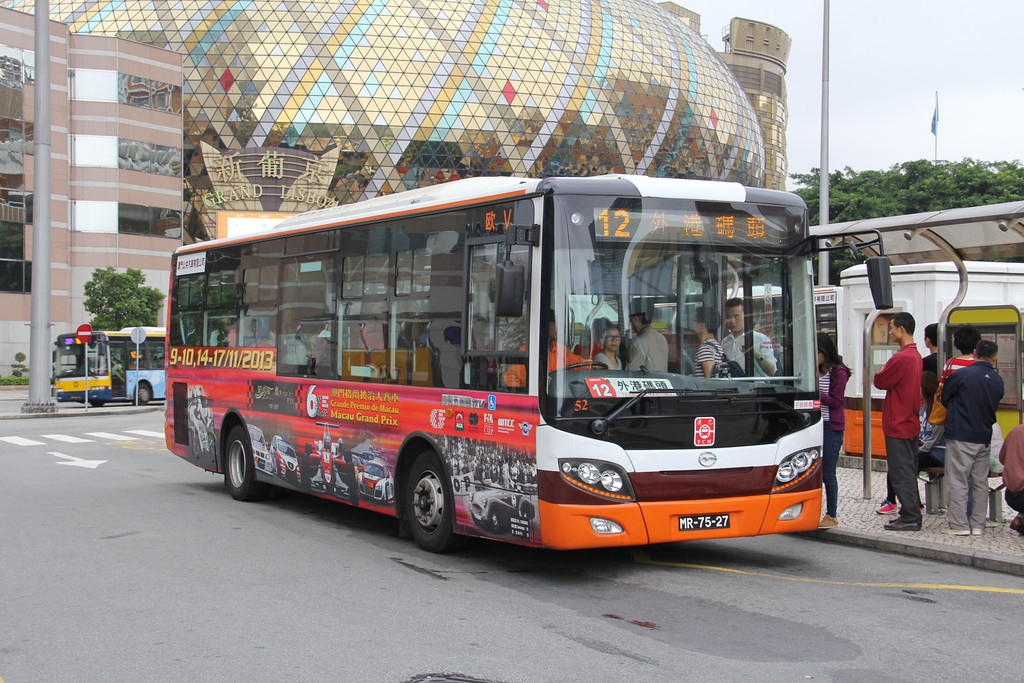The new transport policy to be implemented by 2030 still brings old problems and some of the changes raise concerns on the part of the population. One of them is the way in which interdepartmental cooperation will be developed, which has been deficient, unclear, and it is easy to evade responsibility.
Since the launch of the General Planning for Transit and Land Transport of Macau (2021-2030), the great controversy seems to be the creation of a cable car connecting Zone A and Zone B of the New Landfills. However, many question whether this will be another “million-dollar project”.
On May 24, Lam Hin San, director of the Services for Traffic Affairs (DSAT), said that the cable car was still a plan in an “elementary design phase” and, therefore, had the suggestions of the population. The Chief Executive, Ho Iat Seng, said on 6 June that a public consultation is normally required for projects of this type, but that “if something is not worth it, it will not be done”.
Unlike cable cars in southwest China’s Chongqing, it’s difficult to take advantage of the difference in elevation between Zone A and B of the New Landfills, says former Town Planning Council (CPU) member Lam Iek Chit. “The Chongqing Cable Car was built between the two bridges of a river valley. Even in the case of the Ngong Ping 360 in Hong Kong, it serves to take advantage of the difference in height of the terrain. Zones A and B, however, are low elevation. It would take a tall structure at both points to support the cable car, which would not be practical,” he comments.
Lam Iek Chit believes that if it is built, it will have to cross the Friendship Bridge, as it takes time to change passengers and change direction, as well as the transport used to reach the cable car. There is also vertical traffic: “To take the cable car from Jardim da Flora, people only enter after buying a ticket. Perhaps it is possible to slightly climb the station to the height of the Friendship Bridge, but it is not easy”.
For urban planner Manuel Iok Pui Ferreira, creativity is to be valued, but it must be supported by concrete data, as well as the analysis of the competent authorities. In his view, “the main problems and short-term objectives have not yet been resolved”. It is, therefore, a matter of prioritizing or not other more practical issues.

Interdepartment cooperation
Looking again at the “Transport Policy 2010-2020” published 10 years ago, the last page of the document points to the Directorate of Services for Traffic Affairs as responsible, including the Directorate of Land Services, Public Works and Transport. , the Directorate of Environmental Protection Services, the Cabinet for Transport Infrastructure (abolished in 2019), the Cabinet for Infrastructure Development (merged with the Department of Public Works and Department of Infrastructure to create the Directorate of Public Works Services to April 2022), the Port Authority and the Civil Aviation Authority as the “Working Group for the Study of Transit and Transport in Macau”.
In contrast, Transport Planning 2021-2030 only contains the term “Interdepartmental coordination” in chapter 4, under “Surveillance and review”: “with an “interdepartmental working group” (…) implementation, supervision and review of planning.”
The published review of the Transport Policy 2010-2020 also reveals that most of the political sessions at the time were attended by interdepartmental representatives, however, in this public consultation session only the DSAT was present.
The urban planner highlights interdepartmental cooperation as the main problem in Macau, ending up missing several opportunities regarding the development of large infrastructures due to the lack of communication between departments. The same gives the example of the Seac Pai Van Line of the Light Metro: “The high cost of the Seac Pai Van Line was not made with users in mind. The stations cover only half of Seac Pai Van and are not connected to the central square or the Lok Kuan Building”, he points out, also questioning whether the Housing Institute should not be involved during the construction process to “ensure that space is reserved for the pedestrian link between the platforms”.
Ieong Meng U, assistant professor at the Department of Governance and Public Administration at the University of Macau, says that this interdepartmental cooperation requires that communication mechanisms be established between departments, that is, public administration reform is needed, with two main driving forces: less funding and accountability. The professor believes that a cut in funds will result in a better organization of the surrounding parties and greater pressure on these entities to produce results.
For this reason, he calculates that interdepartmental cooperation is the main reason for the failure of public consultations. “There are no consequences for the bad results”, he laments, referring to another situation that causes him great concern: “The Government increasingly avoids taking responsibility and if nothing is done, there will be no consequences. In cases like this, even without mentioning public administration reform, there will hardly be any response to non-routine tasks, even if they are the responsibility of these departments”.

Spectrum of the public consultation has been reduced
When the 2010-2020 transport policy was published, then-DSAT director Wong Wan led various departments in five public presentations spread across the city, mostly over the weekend. In the 2021-2030 period, all public sessions will take place in the DSAT building, in the Fortress of Dona Maria II, with two of the sessions at 7 pm on a Thursday. So far, the current director, Lam Hin San, was not present.
PLATAFORMA was present at one of the sessions and questioned the process. A DSAT representative replied that management values all opinions: “Actually, this time we have different channels. In addition to face-to-face communication, in which we participate several times, we also have other methods, such as online channels and email. We hope that the opinion of the entire population will be heard and we want to hear your suggestions”.
In the first half of the 2010-2020 transport policy, the Government promoted public participation. The creation of the Traffic Advisory Council, in 2011, and the launch of the “Friends of the Bus” initiative by DSAT, in 2012, sought to develop a communication platform between Government, industry and users. However, in 2019, DSAT announced with “immense regret” the dissolution of the “Friends of the Bus” program, due to the reduction in the number of participants.
The Macau Bus and Public Transport Enthusiasts page, concerned with the current context, has highlighted that the problem lies in the fact that the management does not seek to know the will of the population during the public consultation. Regarding the Transit Advisory Board’s press release regarding adjustments to bus routes and transport proposals, DSAT only informed the Traffic Advisory Board after making the decisions. “It is not a public consultation, it is a statement”, say the members of the organization, who admit that they do not have great hope in this new plan, as they do not see a clear direction, the content in the document is mostly conceptual and, above all, , does not give opportunities for reciprocal communication. Enthusiasts give the example of a bus route: “Only two bus companies discussed and coordinated the measure with the Government over the years, but the proposal was implemented the day after it was formally presented”, so “there was never space for the public to share their opinion, support or opposition. It’s a closed operation.”

New routes only for new areas
In the compilation of opinions on the 2010-2020 traffic policy, opinions from residents were included who pointed out that there is no bus stop in front of the Fai Chi Kei Social Housing, which is not very convenient for the elderly who want to go to the Conde de São Januário Hospital Center. At the moment there are additional stops at the Fai Fu Building, as well as an H2 route that connects directly to the Conde de São Januário Hospital Center, but the service frequency is 25 to 30 minutes, in addition to not operating during the weekend. week or holidays.
According to Bus Enthusiasts, over the years the routes have been constantly changed, and the number of routes has been redirected (such as routes 19 and H3), rather than making adjustments to the streets so that the buses can pass. “The only routes that have been added over the last 10 years are the 101X and 102X from Greater Bay at 51,52,55,56 and 59 on Seac Pai Van, plus the main routes 3AX and 5AX, which have since been suspended after the terminal floods with Typhoon Hato. All new routes were created due to the development of new urban areas or weather factors”. Members criticize that the old routes have remained unchanged over the last decade, with only a few repairs and alterations, such as increasing the size of vehicles, ignoring the overlapping routes that exist, as well as the illogical definition of stops. “For example, in the vicinity of the Qingmao Border Post, the current Qingmao Station / Canal dos Patos Substation of 8A is 300 meters away from the post, with a 200 meter passenger boarding zone, so why is there a stop outside this area?” They also question whether there is a way to justify the existence of a station under the pedestrian overpass of the Qingmao Border Post and another in front of the Ilha Verde Neighborhood Building, not 200 meters away.
Enthusiasts claim that the planning of these bus stops is chaotic. In recent years, bus terminals have been created in social housing areas or close to government agencies, such as Edifício do Lago, Chun Su Mei, The Riviera and Povoação de Mong-Há. In the future, several will be created in the Thermoelectric Power Station, in Zone A of Novos Urban Landfills and in the Rotunda da Concórdia. “However, this distribution of bus stops makes no sense. Either they are very far away, or a few are on a single street (as is the case with the Thermoelectric Power Station, Pearl Horizon and Mong Há Terminal), creating a situation in which several terminals have routes without passengers, built just to build.”
Green travel
The 2010-2020 traffic policy mentioned the need to “encourage the use of environmentally friendly vehicles with technological means. Determine gas emission standards; accelerating the introduction of complementary constructions and measures for environmentally friendly vehicles; study incentive solutions and subsidies for replacement by environmentally friendly vehicles, stimulating energy savings and reducing gas emissions.”
Currently, and over the last decade, the popularity of electric vehicles has been growing, but there is still a long way to go to achieve the medium-term goals set in the 2010-2020 policy. Manuel Ferreira questions whether these should even continue to operate for the promotion of electric vehicles. “Although more and more people are buying electric vehicles, older buildings do not have the facilities for them. When an owner wants to install the necessary support for these vehicles, they will have to go through a long and complicated process, including property law and civil code, as well as a meeting with the building owners.” The urban planner praises the need to update the legal framework to promote green industry and transport. This returns to the problem of interdepartmental coordination: “Why don’t petrol stations install charging points [for electric vehicles]? For safety reasons due to the presence of fossil fuels? These issues have not yet been properly explained to the population.”



